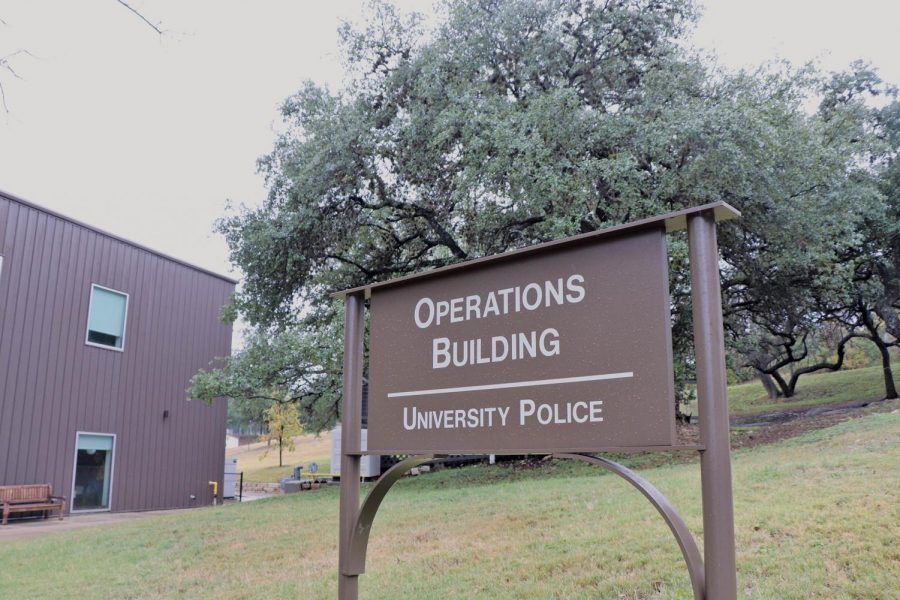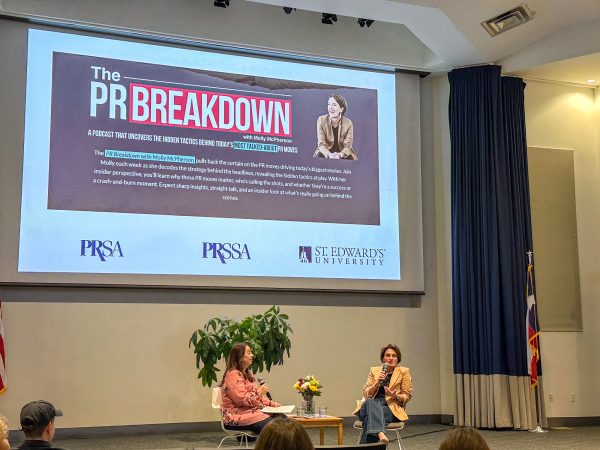SEU students, faculty examine gender diversity within law enforcement
St. Edward’s UPD has offices in the Operations Building, which is located behind St. Joseph’s Hall, next to the St. Edward’s tennis courts. The gender ratio of UPD officers is unknown as they refrained from commenting on this story.
The Austin Police Department and The University of Texas Police Department (UTPD) has recently seen a rise in applications and hirings of female police officers. Despite this, “only about 13 percent of the total of sworn officers in the U.S are women and less than 2 percent are chiefs,” according to a 2018 article by The League of Women in Government, a group that supports the advancement of women in local government.
Associate professor of university studies, Dr. Alexandra Barron, thinks that there are some students who might feel more comfortable talking to a female officer. She is also curious about whether there is research on female victims of assault and if they prefer talking to female officers.
Barron teaches a number of gender studies courses at St. Edward’s and serves as the Director of the Freshman Seminar Program.
“In a general sense, to mitigate gender bias, it makes a difference who is on the hiring committee. It also matters where the department reaches out to as it seeks candidates. And then it’s important to support women once they’re hired so we retain them,” Barron says.
Some St. Edward’s students say that they encourage university police departments to increase their gender diversity.
Kirsten Swedenburg, freshman writing and rhetoric major, says that she hasn’t seen a lot of UPD officers around campus but feels she “can safely assume that there aren’t a lot of women.”
“I feel like if you’re gonna be any sort of law enforcement, it just matters that you’re dedicated to upholding the law and keeping people safe,” Swedenburg says, adding that “gender shouldn’t be a problem in the hiring process” and in law enforcement as long as people applying to be in the police force want to and are physically able to help people.
Criminal Justice major Jen Garcia agrees that gender shouldn’t have anything to do with the hiring process within law enforcement.
“I think it’s just a matter of capability to conduct the job and do it properly,” Garcia says.
She adds that having more women in law enforcement would make it easier for female students to report crimes.
“Truth to fact, sometimes women aren’t comfortable around men no matter what, and in the nature of certain crimes, women will seek out other women before they seek out a man. So to have a female in that position available to the female population at the school is very important.”
While Garcia thinks the police force at St. Edward’s could be more inclusive of women, she thinks the team still works hard to ensure campus safety.
“I feel pretty safe during the day, I’m a woman, so at night I’m typically very paranoid. But I think UPD does an adequate job while there is still room for improvement. With the current measures that the school has in place, I don’t think that anyone could strongly say that they’re slacking in keeping the student population safe,” Garcia says.
In their article, The League of Women in Government add that “Although we don’t know all of the reasons why women are underrepresented, we do know education, training and development are the keys to increasing diversity of all kinds in organizations. Further, we know from research that gender balanced and inclusive organizations are more financially sound, innovative and successful.”









